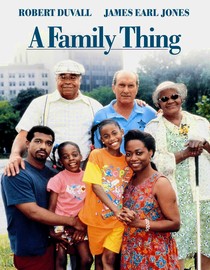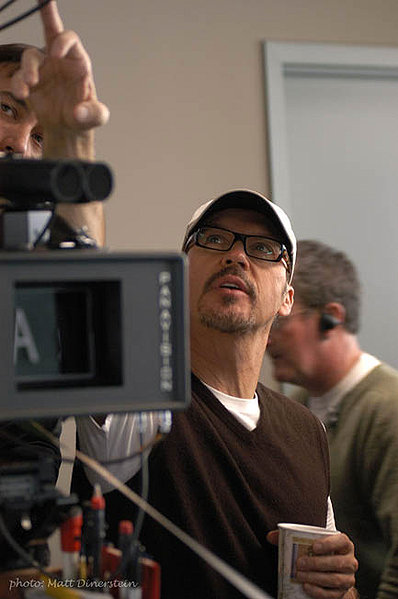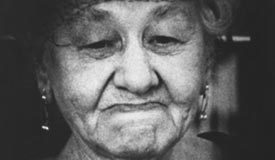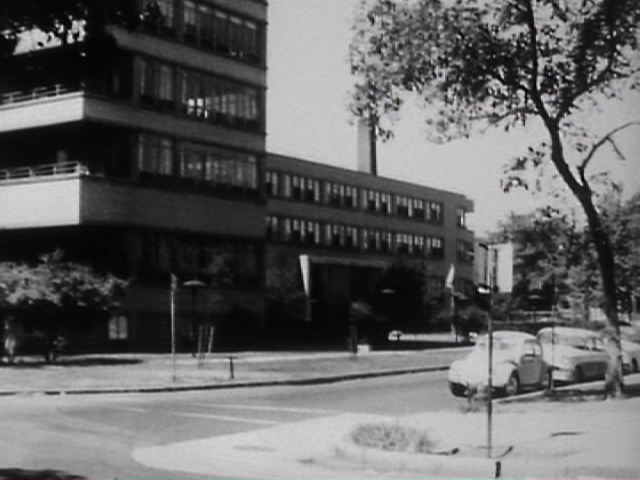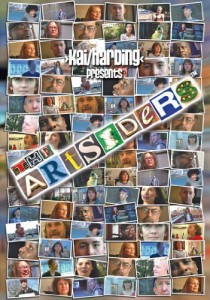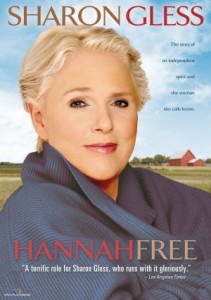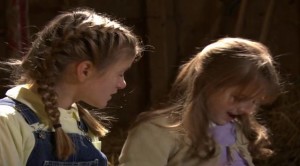NOTE: Sometimes procrastination leads to thematic serendipity. I took so long getting around to finally finishing up and posting my review of Hannah Free, that it is now Pride Week; so I might as well make it a theme and haul out more LGBT-centric content. This is a reposting of a review I wrote a few years ago.
The issues raised are even more crucial in light of the real progress on LGBT Rights made in the last few years: Namely the idea that tastefully done gay themed projects should be marketed and be made available to a more mainstream and “Family-oriented” (though it makes me grit my teeth to use that term!) audience- and that the main obstacle to this happening is the timidity of TV/Film execs who are themselves gay. Perhaps it is time for some bravery on their part and for them to have a little more faith in mainstream America. /endsoapbox

Of all the Chicagoland shot films that I was hoping to see before handing in the manuscript for Hollywood On Lake Michigan, 2nd Edition, Were The World Mine was probably the one that I was most sad to have missed out on. I had heard great things about this empowering gay musical made on a shoestring budget, and how the film’s makers were desperately trying to get it a mainstream theatrical release.
Unfortunately, that mainstream release never materialized, and I was forced to wait until it was recently released on DVD. While the film was definitely worth the wait, viewing it made it painfully clear what a travesty of cinematic justice it was that this delightful little picture never received the exposure it deserved. Hopefully, the DVD release will bring it some wider recognition.
Were The World Mine is an enjoyable film on several levels; an exuberant and charming musical, a touching and tender coming of age story, a meditation on the nature of love and acceptance, and a wacky, surreal and sometimes campy comedy.
The project grew from a short musical screenplay, written in 2003 by Tom Gustafson, about a young gay teen who finds solace and strength in the words of Shakespeare (the piece was inspired by his experiences growing up gay in a small Illinois town). Gustafson’s partner, Cory James Krueckeberg, was impressed by the script and they both embarked on an attempt to actualize the work.
Gustafson, a graduate of Northwestern University, used contacts developed from working as a casting assistant on Road To Perdition and Master And Commander: The Far Side of The World to marshal resources and assemble a devoted team of collaborators and crew members. Krueckeberg, an accomplished actor, designer, and director; also drew upon his tenure in the Chicago theater community to assist the cause.
The result was Fairies, a short musical film. Fairies received a rave response at a screening in a Boystown venue, and they were quickly able to raise money for festival submissions. The film ended up appearing at over 75 festivals around the world. A year later, during a flight from LA to New York, they decided to expand Fairies into a full length feature. By the time the plane landed, Gustafson and Krueckeberg had already sketched out the framework for the picture.
After the pair completed the script (working in conjunction with talented Chicago composer Jessica Fogle on the songs), Gustafson and Krueckeberg then methodically set out to acquire financing for the feature film. Their efforts were a primer on the right way to fund and create a low budget independent movie; using staged readings of the script to garner interest in the project from potential investors, presenting a well constructed business plan to those investors, and doing research to locate all other possible funding sources. Meanwhile, they were also working hard on a production schedule so as to be able to hit the ground running when the financing came through, and searching the country for the talent to perform the various roles in the film.
Although many big name actors who expressed interest early on disappeared once the extent of the film’s gay content became apparent to them, casting people Carrie Barden, Mickie Paskal and Jennifer S. Rudnicke were able to assemble an amazing group of performers, the proverbial mix of seasoned veterans and talented newcomers.
Big name actors (and/or their agents) weren’t the only ones afflicted by uneasiness over the film’s gay content, investors were shying away as well, and for a while it looked as if financing would not materialize. But Gustafson, Krueckeberg and producer Peter Sterling were able to secure the final funds required. Pre-production reached a fever pitch in preparation for the shooting of the film, which was done in the Chicago area and took an amazingly short 4 weeks (it almost seems impossible when you watch the movie).
Were The World Mine is the story of Timothy, a shy and creative gay teen who often retreats into his musical daydreams in order to endure life in a private boys school and a stultifying small town. When he is cast as Puck in a school production of Shakespeare’s Midsummer Night’s Dream, he becomes more aware of his talents and starts to blossom under the tutelage of his arty English teacher.
This process reaches full flower (pun mandatory) when he discovers a love potion recipe for Puck’s purple pansy secretly encoded in Shakespeare’s text (the pansy causes those sprayed by it to fall for the first person they see). Timothy creates the potion, then uses this magical flower to turn his whole town gay, most notably the hunky rugby player for whom he has been pining.
Tanner Cohen, who plays Timothy, was really quite a find for the production; possessing strong acting skills and an incredible voice (not to mention an uncanny resemblance to Nick Stahl). Cohen deftly captures the nervous insecurity of Timothy, but also really brings it in the musical numbers.
Nathaniel David Becker, who makes his film debut as Jonathan (the rugby playing love interest), has an excellent voice, handsome looks and solid acting chops. He should be able to write his own ticket in the musical film/theater world; in fact he already seems to be a bit of a gay heartthrob.
The supporting cast is unbelievably strong: the devilishly quirky Wendy Robie (Nadine from Twin Peaks) plays the English/Theater instructor (in a role she reprised from Fairies), revered Broadway stage performer Judy McLane shines in her first film work as Timothy’s mother, Daytime Television fixture Jill Larson (Opal on All My Children) is an absolute hoot as McLane’s eccentric employer, veteran Chicago character actors Christian Stolte and David Darlow do their usual brilliant jobs, and newcomers Zelda Williams and Ricky Goldman are adorable as Timothy’s best friends and confidantes.
In addition to the fine acting performances, the musical numbers really knocked my socks off (and I’m not generally a fan of contemporary musicals). Cory Krueckeberg seamlessly melded Shakespeare’s words with his own clever lyrics, Jessica Fogle’s melodies were excellent (catchy without being cloying or fluffy), and Tim Sandusky’s work on the score, arrangements and production was absolutely first rate (of course, he has a reputation for that in Chicago). Todd Underwood’s choreography was joyously kinetic but not too busy or cliched, Elizabeth Powell Wislar’s costumes were fab, and Director of Photography Kira Kelly was able to achieve a beautiful look with limited resources.
Gustafson and cohorts worked hard for a wider mainstream release for the film and it’s a shame that they weren’t successful, because Were The World Mine is truly “The Gay Teen Musical For The Whole Family.” Seriously. Although there’s a certain intensity in the romantic moments that generates a bit more heat than the hook up scenes in your average WB-style teen dramedy (which comes more from having better actors being directed well); WTWM is much less salacious than the teen centered offerings on any network. The most graphic action in any of the love scenes is a chaste kiss and warm caress, which is positively Disney-esque compared to the bump and grind explicitness in standard teen fare (actually, WTWM has been likened by many to Disney’s High School High). And I think we can all agree that young dudes with their shirts off isn’t exactly pornographic (those who don’t agree probably wouldn’t have read this far anyway).
Of course it’s two guys doing the kissing, so the knee jerk reaction from mainstream execs (particularly gay mainstream execs) when confronted by a film that forthrightly portrays romantic affection between two males is to pronounce it “too gay.” Those two words are the bane of the existences of all gay filmmakers/artists/musicians/etc. seeking to expose their work to a wider audience.
The fact that this cowardly mantra is so often recited by corporate cultural gatekeepers who are themselves gay is especially puzzling. Particularly about something as heartfelt and wholesome as Were The World Mine. In a interview included in the WTWM press kit, Gustafson wonders:
Maybe it’s really that purity and innocence that scares people into saying the film is too gay? I think to some people, this innocence is even more dangerous than films that portray gay characters in very crude and sexual ways. Historically, ‘gay’ has been more prominent, and as a result more accepted in a way, as a dirty little secret involving bathroom stalls or sex clubs than when it involves real love, religion and the long term commitment of a marriage like institution. Regardless, it’s a strange irony to say that an incredibly innocent film is too gay. In some way I think it comes from a shameful place, and I think some of the non-straight people in the industry react this way to things as a defense mechanism. The same way our main character escapes an unsavory reality with daydreams, these people escape reality by saying it’s ‘too gay’ instead of putting support behind it and risking ridicule.
Whatever the true motivations of those who denied this film its due, the fact remains that it was a poor decision. With both filmed and live musicals pulling in the public in droves in recent years, Were The World Mine could have really made a splash had it been given a chance.
Hopefully, the recent DVD release will at least help get this picture seen by some of the legions of people, gay and straight, who would enjoy it.
Which is the really crux of the matter at hand, not to mention one of the most frustrating things about the capricious and arbitrary way that films are distributed by Hollywood, the fact that so many great pictures never get brought to the attention of the people who would most enjoy them.
Aside from the sheer injustice of it, it’s just bad business.

- Tanner Cohen and Nathanial David Becker bring the sexy in Were The World Mine.
Tags: Carrie Barden, Chicago Set Films, Christian Stolte, Cory James Krueckeberg, David Darlow, Elizabeth Powell Wislar, Family Films That Don't Suck, Jennifer Rudnicke, Jessica Fogle, Jill Larson, Judy McLane, Kira Kelly, lgbt cinema, Mickie Paskal, musical movies, Nathaniel David Becker, Peter Sterling, Ricky Goldman, Tanner Cohen, Tim Sandusky, Todd Underwood, Tom Gustafson, Wendy Robie, Were The World Mine, Zelda Williams








